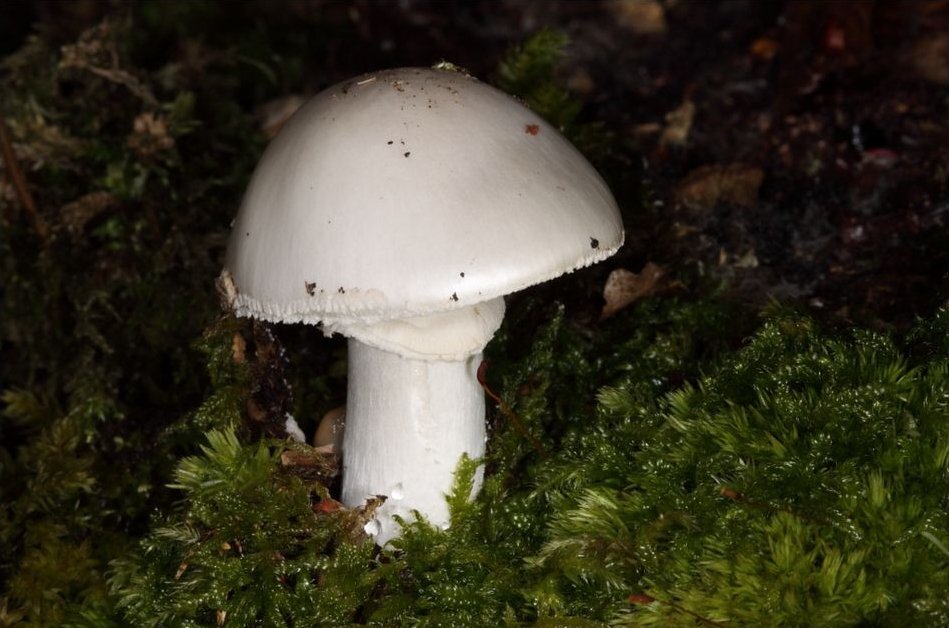Destroying angels are among the most toxic known mushrooms; both they and the closely related death caps (A. phalloides) contain amatoxins.[1]
Destroying angels can be mistaken for edible fungi such as the button mushroom, meadow mushroom, or the horse mushroom. Young destroying angels that are still enclosed in their universal veil can be mistaken for puffballs, but slicing them in half longitudinally will reveal internal mushroom structures. This is the basis for the common recommendation to slice in half all puffball-like mushrooms picked when mushroom hunting. Mushroom hunters recommend that people know how to recognize both the death cap and the destroying angel in all of their forms before collecting any white gilled mushroom for consumption
The destroying angel (Amanita bisporigera) and the death cap (Amanita phalloides) account for the overwhelming majority of deaths due to mushroom poisoning. The toxin responsible for this is amatoxin, which inhibits RNA polymerase II and III. Symptoms do not appear for 5 to 24 hours, by which time the toxins may already be absorbed and the damage (destruction of liver and kidney tissues) is irreversible. As little as half a mushroom cap can be fatal if the victim is not treated quickly enough. The symptoms include vomiting, cramps, delirium, convulsions, and diarrhea.
